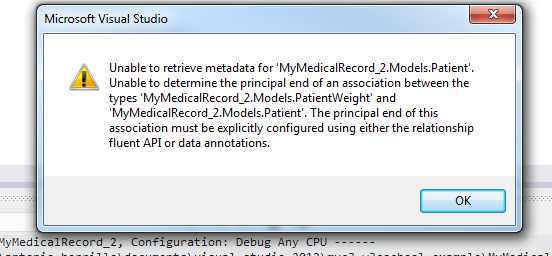Hello guys, I wonder if I could get some help with a project I'm planning to start. As you all probably know, I'm learning MVC and I've followed dozen of online tutorials, dipped in and out of many books but I got to the conclusion that I have to dive straight in and attempt, hopefully with the help of the community, to build a small, easy application. Obviously, if you think it is too complicated for a beginner, please do let me know.
So, what I've in mind is an application that allows users to enter their own, basic, medical record. I have an HTML version on my local machine, with some sample data. Here are some screenshots of the current version:

as you can see there are 5 sections:
1)Patient's general info;
2)Blood tests;
3)Jabs and injections;
4)Weight;
5)Exercises;
These last 2 are done with google graph, but I won't use that for the MVC application as it may add another layer of complication.
So, the idea is that users will be able to record all the details listed (all the data wil be saved into a Entity Framework database) and maybe log in before doing so (but I suppose I can always add that to a later date).
Starting with the models, I suppose that each of the 5 sections can be a class, correct? So, for example, let's take the first one, "patient's general info": it'll be something like this:
public class patientDetails
{
public long Id { get; set; }
public int Height { get; set; }
public int Age { get; set; }
public string Allergies{ get; set; }
public string Operations{ get; set; }
public string HealthConditions { get; set; }
}
and so on for the other sections, although there is a small problem, which is the fact that I have to allow for multiple entries, like, there could be more than one allergy, operation of health conditions, and I'm not entirely sure how to deal with that.
That as far as I got with planning, you're more than welcome to make any suggestions, or highlight things that I might not have thought about that.
Please do let me know what you think about it
Cheers




 you'll notice that the patient table has only Age, Weight and Weight_ID (whatever this is) and all the other properties from the class are just missing. What I don't understand is why. I would expect the table to contain all the data in the patient class. I obviously googled it, but I don't seem to be able to find an explanation, and I was wondering if anybody with a bit of EF experience can clarify this for me.
you'll notice that the patient table has only Age, Weight and Weight_ID (whatever this is) and all the other properties from the class are just missing. What I don't understand is why. I would expect the table to contain all the data in the patient class. I obviously googled it, but I don't seem to be able to find an explanation, and I was wondering if anybody with a bit of EF experience can clarify this for me.


